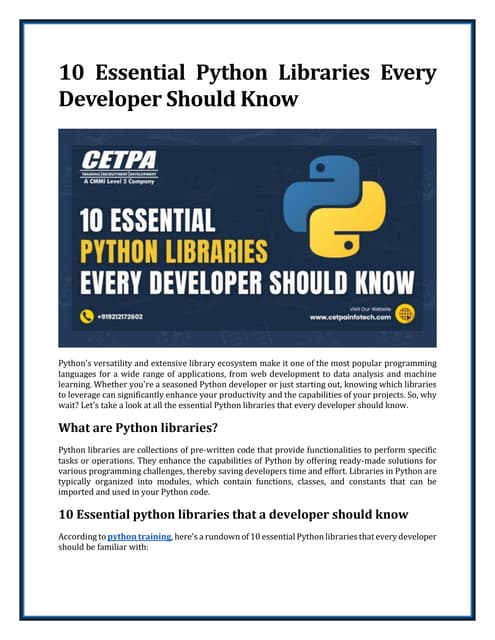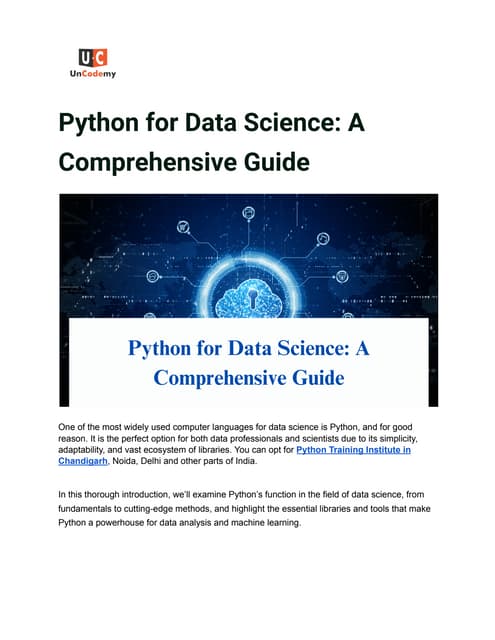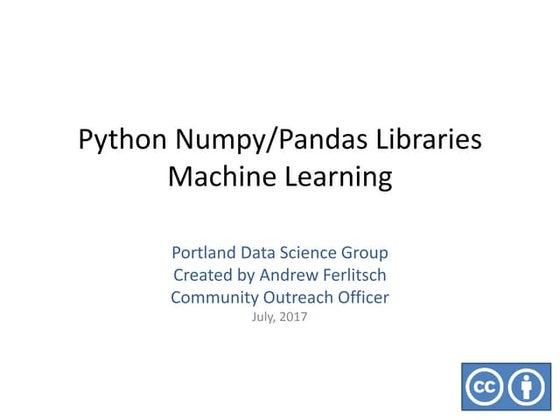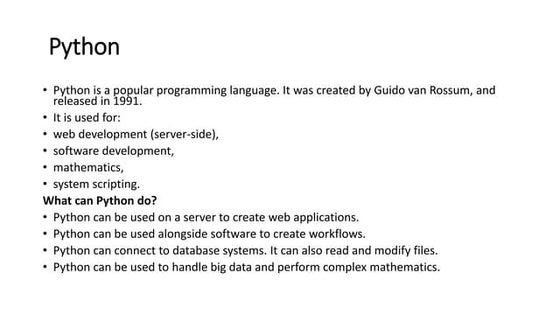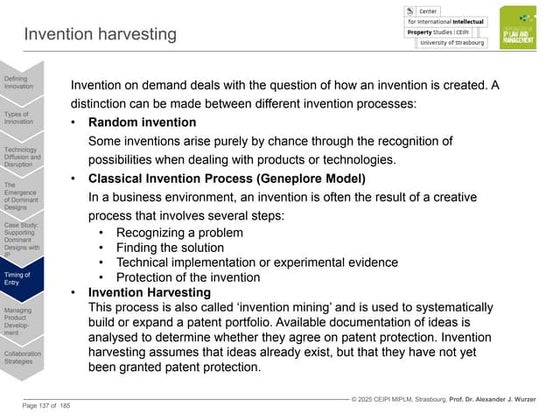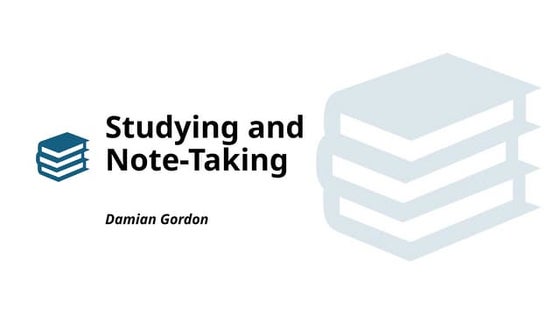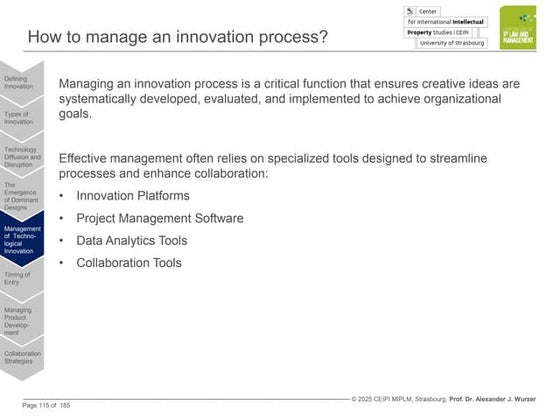Advance Programming şÝşÝߣs lect.pptx.pdf
- 1. Powering Innovation with Python's Versatile Libraries PYTHON
- 2. Python is a high-level, interpreted programming language known for its simplicity, versatility, and readability. It is widely used across various fields, including web development, data science, artificial intelligence, scientific computing, and automation.
- 3. Python Libraries Python is a versatile programming language, and its library ecosystem is one of its greatest strengths. Libraries provide pre-written code that simplifies complex tasks, allowing developers to focus on logic. Python libraries cater to a wide range of domains, including web development, data analysis, machine learning, and more. These libraries save time, enhance productivity, and foster innovation.
- 4. Python simplifies repetitive tasks through scripting and automation. Libraries: Selenium, PyAutoGUI, Requests, BeautifulSoup. Example: Automating data entry, web scraping, or sending emails. Python powers cutting-edge technologies in AI and ML. Libraries: TensorFlow, PyTorch, Keras, OpenCV, NLTK.Example: Developing chatbots, image recognition systems, or natural language processing (NLP) models. NumPy, Pandas: Data manipulation and numerical operations. Matplotlib, Seaborn : Data visualization tools. Example: Analyzing customer behavior, predicting trends, or building recommendation systems. Python is used to develop scalable and secure web applications. Django and Flask: Popular web frameworks for building web apps. FastAPI: Used for building APIs with high performance. Example: Building websites, e- commerce platforms, or RESTful APIs.
- 5. 1. Libraries are collections of pre-written modules and functions that extend Python's capabilities. 2. They streamline coding by reducing the need for repetitive or boilerplate code. 3. Libraries can be built-in (like os, math) or external (like NumPy, pandas). 4. They are often open-source, maintained by vibrant communities, and continuously updated
- 6. Pandas (data manipulation), NumPy (numerical operations), SciPy (scientific computing). Matplotlib (basic plots), Seaborn (statistical visualization), Plotly (interactive graphs). TensorFlow (deep learning), PyTorch (AI frameworks), Scikit-learn (machine learning) Flask (microservices), Django (full-stack), FastAPI (modern APIs). OS (operating system interaction), Requests (HTTP requests), OpenCV (image processing).
- 7. A Time-saving: Libraries provide pre-written solutions to common problems. B Reliability: Most libraries are tested extensively, reducing bugs and errors. C Community Support: A large community ensures continuous updates and extensive documentation. D Integration: Libraries easily integrate into existing projects, enhancing functionality.
- 8. Learning: Refer to official documentation and tutorials for detailed usage examples. Installation: Use pip to install libraries: Example: `pip install library-name`. Updating: Regularly update libraries to access new features and security fixes. Importing: Import the library in your Python script: Example: `import library-name`.
- 9. Read documentation to understand advanced usage and avoid errors. Regularly update libraries and avoid unnecessary installations. Ensure that the library versions match your Python version. Some libraries depend on others, so ensure all are installed correctly.
- 10. Lets Jump into Code and See some Examples
- 11. 1. Arrays: We define two 1D arrays array1 and array2. 2. Element-wise Operations: • Addition (+) : Adds corresponding elements: 1+4, 2+5, 3+6. • Multiplication (*): Multiplies corresponding elements : 1 x 4,2x5,3x6. NumPy (Numerical Python) is a powerful, open-source Python library primarily used for numerical and scientific computing. It provides a high- performance multidimensional array object and tools for working with arrays efficiently. NumPy serves as the foundation for many data science and machine learning libraries.
- 12. 1. Arrays: We define 2D arrays matrix1 and matrix2. 2. Matrix 1 is a 2 x 3 matrix. 3. Matrix 2 is a 3 x 2 matrix 4. The matrix multiplication result will be a 2 x 2 matrix, computed by taking the dot product of rows from Matrix 1 with columns from Matrix 2. NumPy's np.dot function makes matrix multiplication efficient and easy to perform!
- 13. Pandas is an open-source Python library used for working with and analyzing structured data. It provides easy-to- use tools to handle data in the form of tables (like rows and columns), making it simple to clean, manipulate, and explore datasets. Data Structures : • Series: A one-dimensional labeled array (like a single column of data). • DataFrame: A two-dimensional table-like structure (like an Excel spreadsheet). Data Handling : • Easily read and write data from files like CSV, Excel, or databases. Data Manipulation: • Filter, sort, group, merge, and reshape data quickly. Data Cleaning: • Handle missing values and prepare datasets for analysis.
- 14. Creating the Dictionary: • A dictionary called data is created with two keys: "Name" and "Age". • "Name": Contains a list of names (["Alice", "Bob"]). • "Age": Contains a list of ages ([25, 30]).. Creating the DataFrame : • The dictionary data is converted into a DataFrame using pd.DataFrame(). • A DataFrame is a table-like structure with rows and columns: • The keys of the dictionary ("Name" and "Age") become the column headers. • The values of each key become the column data. Row indices (0, 1): Automatically generated by Pandas to uniquely identify each row.
- 15. Creating the DataFrame: • A dictionary (data) is used to define the columns and their values. • The pd.DataFrame(data) converts this dictionary into a table-like structure. Adding a New Column: • A new column, "Profession," is added to the DataFrame with specified values. Filtering Rows: • Rows where the "Age" column has values greater than 28 are filtered using df[df["Age"] > 28]. Displaying Data: • The original, modified, and filtered DataFrames are printed for comparison.
- 16. Matplotlib is a popular Python library used for creating static, animated, and interactive visualizations in Python. It provides a wide range of plotting options, including line plots, bar charts, histograms, scatter plots, and more. The most commonly used part of Matplotlib is the pyplot module, which allows for simple, high-level plotting with commands • Extensive support for different types of plots (e.g., line, bar, pie, scatter). • Customization of plots, including titles, labels, colors, and grids. • Ability to save plots to various file formats (e.g., PNG, PDF). • Integration with other libraries like NumPy and Pandas for data visualization. Seaborn is a Python data visualization library built on top of Matplotlib. It simplifies the creation of visually appealing, informative statistical graphics. Seaborn provides high-level functions for creating complex visualizations like violin plots, box plots, heatmaps, and pair plots. It is especially useful for statistical plotting and works well with Pandas DataFrames. • Simplifies the creation of complex statistical plots (e.g., regression lines, correlation heatmaps). • Aesthetically pleasing plots with better default themes and color palettes than Matplotlib. • Direct integration with Pandas for plotting data stored in DataFrames. • Built-in functions for statistical analysis and visualization (e.g., sns.lmplot for linear models). • Integration with other libraries like NumPy and Pandas for data visualization.
- 17. • Data: categories: A list of categorical labels for the x-axis. values: A list of numerical values corresponding to each category. • plt.bar(): This function is used to create a bar chart, where categories are plotted on the x-axis and values on the y-axis. • Labels and Title: The plt.title(), plt.xlabel(), and plt.ylabel() functions are used to add a title to the chart and label the x and y axes. • plt.show(): Displays the chart in a window. • Around 15 - 20 categories of plot in Matplotlib
- 18. • Seaborn is used to create a scatter plot with a regression line using the lmplot function. • The data comes from the built-in tips dataset, which contains information about restaurant bills and tips. • x='total_bill' and y='tip' specify the columns to plot. • The regression line shows the relationship between the total bill and the tip. • Matplotlib (Simple): A basic line plot showing a linear relationship between two variables. • Seaborn (Complex): A scatter plot with a regression line, using a built-in dataset to analyze the relationship between two variables (total bill and tip).
- 19. Python libraries are essential tools for developers, enhancing efficiency and functionality. They enable Python's application in diverse domains, from AI to web development. By mastering libraries, developers can focus on creativity and problem-solving. Conclusion
- 20. Feel free to ask any questions or share your thoughts.













![Creating the Dictionary:
• A dictionary called data is created with two keys: "Name" and "Age".
• "Name": Contains a list of names (["Alice", "Bob"]).
• "Age": Contains a list of ages ([25, 30])..
Creating the DataFrame :
• The dictionary data is converted into a DataFrame using pd.DataFrame().
• A DataFrame is a table-like structure with rows and columns:
• The keys of the dictionary ("Name" and "Age") become the column headers.
• The values of each key become the column data.
Row indices (0, 1): Automatically generated by Pandas to uniquely identify
each row.](https://image.slidesharecdn.com/advanceprogrammingt-250116173700-0a7cefdf/85/Advance-Programming-şÝşÝߣs-lect-pptx-pdf-14-320.jpg)
![Creating the DataFrame:
• A dictionary (data) is used to define the columns and their values.
• The pd.DataFrame(data) converts this dictionary into a table-like structure.
Adding a New Column:
• A new column, "Profession," is added to the DataFrame with specified
values.
Filtering Rows:
• Rows where the "Age" column has values greater than 28 are filtered using
df[df["Age"] > 28].
Displaying Data:
• The original, modified, and filtered DataFrames are printed for comparison.](https://image.slidesharecdn.com/advanceprogrammingt-250116173700-0a7cefdf/85/Advance-Programming-şÝşÝߣs-lect-pptx-pdf-15-320.jpg)








